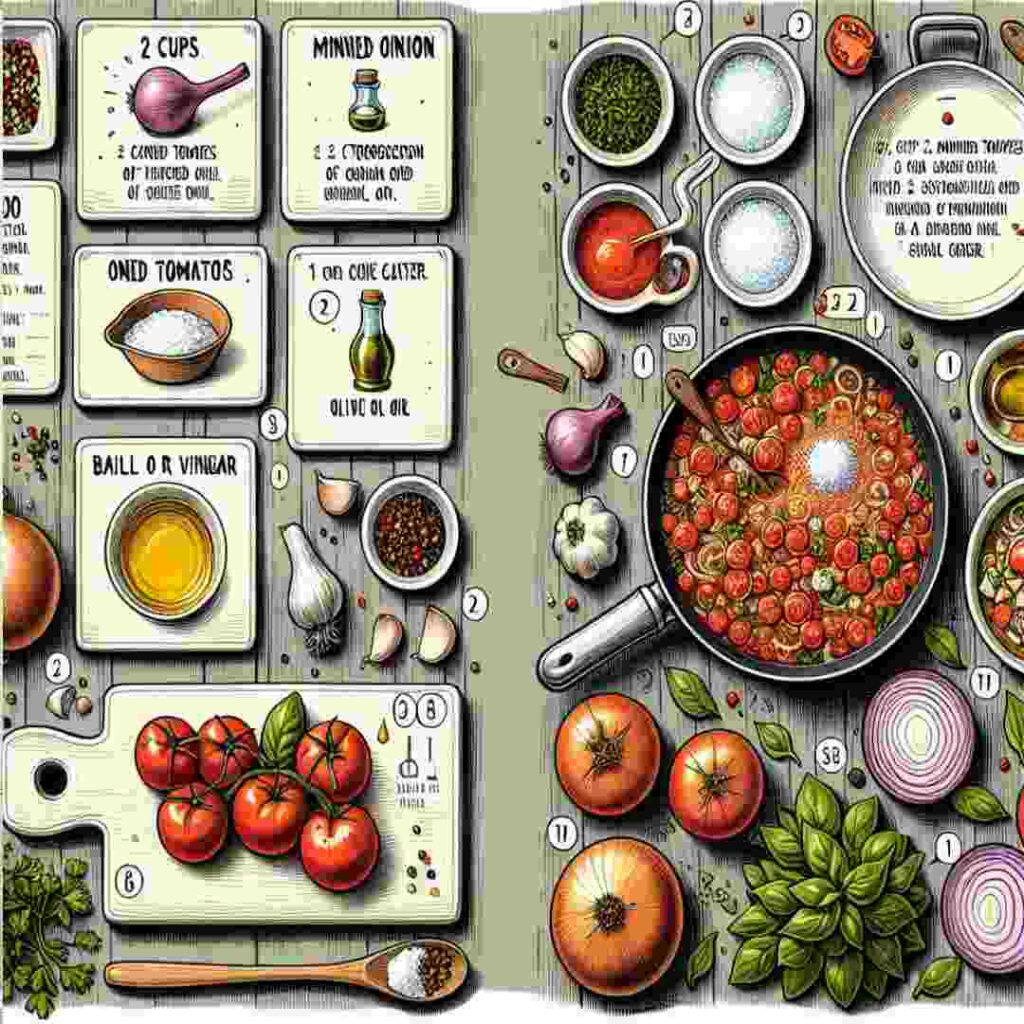Julian sauce—sounds mysterious. For those who haven’t encountered this versatile culinary gem, you’re in for a flavorful adventure. This blog post will take you through the nuances of Julian sauce, exploring its ideal uses and how it can elevate your home-cooked meals to gourmet standards.
What is Julian Sauce?
Julian sauce isn’t a one-flavor-fits-all kind of sauce. It’s a versatile blend that can be sweet and savory, often featuring ingredients like tomatoes, herbs, spices, and sometimes a hint of citrus or vinegar. This makes it perfect for various dishes, from meats to salads and desserts. It’s the sauce you didn’t know you needed, but once you try it, you’ll wonder how you cooked without it.
The Origins and Evolution of Julian Sauce
Julian sauce has roots in traditional European cooking but has since evolved to incorporate global flavors. Its flexibility allows it to be adapted by chefs and home cooks alike, making it a staple in modern kitchens. Julian sauce offers a unique twist on classic recipes, whether you’re using it as a marinade, dip, or topping.
Key Ingredients and Flavor Profile
While there isn’t a single recipe for Julian sauce, some common ingredients give it its distinctive taste. Tomatoes provide a tangy base, while herbs like basil and oregano add depth. Adding garlic, onions, and a splash of vinegar or lemon juice can elevate the flavor, creating a rich and refreshing sauce.
Where to Use Julian Sauce
Perfect Pairings with Meats

One of Julian sauce’s best uses is as a marinade or glaze for meats. Its vibrant flavors can enhance everything from chicken and pork to beef and lamb. Imagine coating a juicy steak with Julian sauce before grilling it to perfection. The result is a caramelized crust with a burst of flavor that complements the meat’s natural taste.
Tips for Marinating with Julian Sauce
- Timing: Allow meats to marinate in Julian sauce for an hour, but overnight is ideal for deeper flavor infusion.
- Application: Use a brush to coat meats evenly, covering all surfaces.
- Cooking Methods: Julian sauce works well with grilling, roasting, and even slow cooking, adapting to different heat applications.
Vegetables and Salads
Julian sauce isn’t just for meats. It’s a fantastic addition to roasted vegetables, providing a sweet-savory contrast that brings out their natural, earthy tones. Toss your favorite veggies in this sauce before roasting, and you’ll have a side dish that’s both healthy and delicious.
For salads, try Julian sauce as a dressing. Its complex flavors can transform a simple green salad into a culinary masterpiece. Mix it with olive oil for a lighter option, or use it as is for a more robust flavor.
Pasta and Grain Dishes

Another fabulous use for Julian sauce is in pasta or grain dishes. Replace your usual tomato sauce with Julian sauce for a twist on traditional pasta. It pairs beautifully with long and short pasta shapes, offering a fresh take on a classic Italian meal.
For grain dishes like quinoa or couscous, Julian sauce adds an exciting flavor that complements the nutty taste. Mix in a few spoonfuls and have a flavorful base for any protein or vegetable add-ins.
Creative Culinary Uses
Julian sauce’s versatility extends beyond the traditional. Use it as a pizza base for a unique twist, or drizzle it over grilled seafood for an unexpected flavor boost. Some adventurous cooks even experiment with Julian sauce in desserts, drizzling it over vanilla ice cream for a sweet and tangy treat.
Julian Sauce in Fusion Cooking
With its adaptable nature, Julian sauce is perfect for fusion cooking. Combine it with Asian ingredients like soy sauce and ginger for a delectable glaze, or mix it with Mexican spices for a zesty taco topping.
Crafting Your Own Julian Sauce

Basic Recipe and Variations
Creating Julian sauce at home allows you to customize flavors to suit your preferences. Here’s a simple recipe to get you started:
- Basic Ingredients:
- 2 cups of canned tomatoes
- Two cloves of garlic, minced
- One onion, finely chopped
- One tablespoon of olive oil
- One tablespoon of vinegar or lemon juice
- Salt, pepper, and herbs to taste (such as basil, oregano, or thyme)
- Instructions:
- Heat the olive oil in a pan over medium heat. Add onions and garlic, and sauté until translucent.
- Stir in the tomatoes, vinegar, and herbs. Simmer for 20 minutes, stirring occasionally.
- Season with salt and pepper. Blend until smooth, if desired.
Feel free to experiment by adding ingredients like roasted red peppers, chili flakes for heat, or even a touch of honey for sweetness.
Storing and Preserving Julian Sauce
Once you’ve crafted your sauce, you can store it in the refrigerator for up to a week. For more extended storage, consider freezing it in batches. Julian sauce also makes an excellent gift for fellow foodies—pour it into a decorative jar, and you’re set!
Frequently Asked Questions
What dishes are best suited for Julian sauce?
Julian sauce is incredibly versatile and can be used in various dishes. It pairs excellently with meats, such as chicken, pork, beef, and lamb, either as a marinade or a glaze. It’s also great for enhancing the flavors of roasted vegetables, salads, pasta, and grains. The sauce’s rich and refreshing taste makes it an excellent addition to savory and creative sweet dishes.
How can I adjust the flavor of Julian sauce?
The beauty of Julian sauce is its adaptability. You can tweak the basic recipe by adding more or less specific ingredients to suit your taste. For a spicier kick, consider adding chili flakes or cayenne pepper. If you prefer a sweeter profile, a touch of honey or brown sugar can balance the tanginess. Experimenting with herbs and spices will also allow you to craft a version that meets your taste preferences.
Can Julian sauce be made in advance?
Yes, Julian sauce can be prepared in advance. It stores well in the refrigerator for up to a week, making it convenient to have on hand for quick meal preparations. For extended storage, freeze the sauce in portions to quickly defrost what you need without thawing the entire batch.
Is Julian sauce suitable for vegetarians or vegans?
Absolutely! The basic recipe for Julian sauce is entirely plant-based, comprising ingredients like tomatoes, garlic, onions, and herbs. It’s a perfect option for vegetarians and vegans looking to add a flavorful punch to their dishes. Ensure that any variations you create or add ingredients align with vegetarian or vegan dietary preferences.
Conclusion
Julian sauce is a versatile addition to any kitchen, offering endless possibilities for enhancing your dishes. From meats and vegetables to pasta and creative culinary uses, this sauce can transform the everyday into something extraordinary. We encourage you to experiment with Julian sauce, discovering new and exciting ways to delight your taste buds.
Explore our other resources and recipes for more culinary inspiration and a deeper understanding of sauces and complements. Your culinary adventures await!
